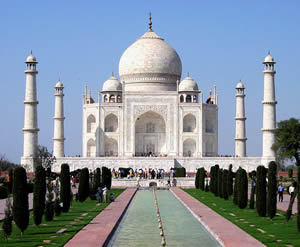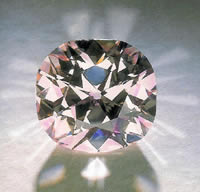Story of the Agra Diamond
Origins in Mughal India

Back in the 16th century, India was a treasure trove of dazzling gemstones, often called the Jewel in the Crown of the British Empire. In 1526, Babur, the first Mughal emperor, swept into the city of Agra - yep, the same Agra that’s home to the breathtaking Taj Mahal. After conquering the city, Babur’s son showed mercy by sparing the lives of the reigning Rajah and his family. In gratitude, the Rajah gifted the Agra diamond, a stunning pink gem, along with a heap of other precious jewels. Talk about a thank-you gift! India is also the birthplace of other legendary stones, like the famous Koh-i-Noor diamond with its own epic tale.
British Acquisition and Smuggling

The Agra diamond’s journey didn’t stop there. By 1857, during the Indian Mutiny, a young British soldier snatched it from the ruler of Delhi. The regiment hatched a wild plan to smuggle it to England. Forget suitcases - they hid the diamond in horse feed, had a horse swallow it, and shipped the animal across the seas. It was a clever scheme, until the poor horse got sick at the port and had to be put down. The soldiers retrieved the diamond from its stomach and made it to England, where it was sold to Edwin Streeter, a prominent London jeweler. Quite the adventure, right? If you're interested in learning more about these precious stones, check out our comprehensive guide to diamond information.
Historical Discrepancies
Now, here’s where things get murky. The story sounds like a blockbuster, but some details don’t add up. Records show that Charles, Duke of Brunswick, bought the Agra diamond in 1844 from Blogg & Martin, a well-known London diamond merchant, with a note tying it to Babur’s 1526 conquest. This date clashes with the 1857 smuggling tale. Some believe the smuggled stone might not even be the same diamond, as sources suggest it weighed 46 carats, while the Agra diamond was listed at 41 carats. To add to the confusion, when the diamond was recut in 1899 by Bram Hertz in Paris to remove black inclusions, it was reduced to 31.41 carats. One account even claims it was 71 carats before the cut. History can be a real puzzle!
Modern History and Sale
Despite the debates, the Agra diamond kept sparkling through history. Edwin Streeter likely bought it from Bram Hertz in 1891. Since then, it’s changed hands multiple times. Its last public sale was a big one - on June 20, 1990, at Christie’s in London, it fetched £4,070,000, blowing past expectations to land with the SIBA Corporation of Hong Kong. Not a bad price for a gem with such a colorful past! Similar journeys can be found in the tales of other historic gems, such as the intriguing history of the Sancy diamond.
Frequently Asked Questions
What is the Agra diamond?
The Agra diamond is a famous pink diamond, historically tied to Mughal India, known for its vibrant color and storied past.
Is the horse-smuggling story true?
While it’s a compelling tale, historical records cast doubt on its accuracy, as documents suggest the diamond was already in London by 1844, before the 1857 smuggling event.
What is the current weight of the Agra diamond?
After being recut in 1899, the Agra diamond weighs 31.41 carats.
Who owns the Agra diamond today?
The last recorded sale was in 1990 to the SIBA Corporation of Hong Kong, but its current ownership is not publicly documented.

